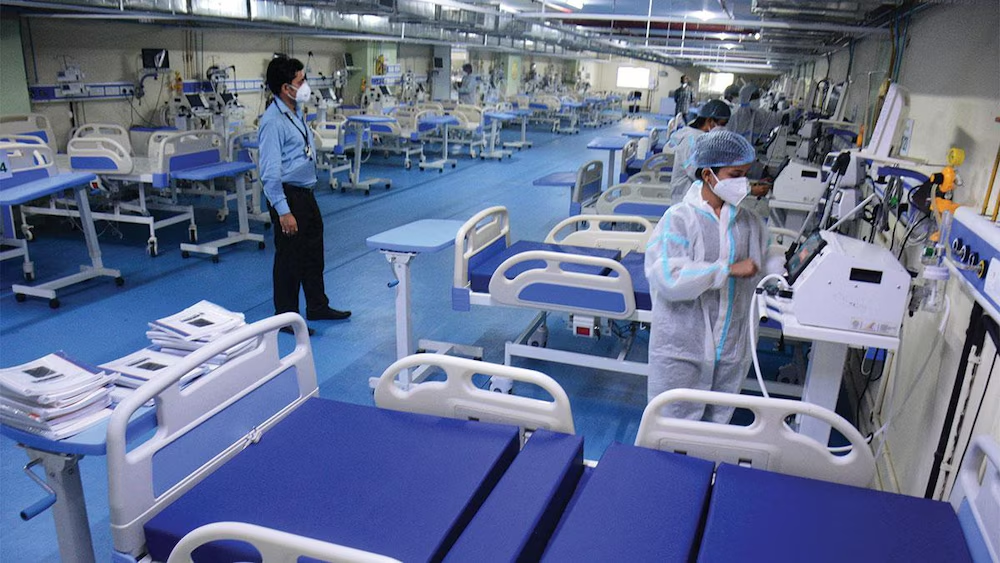New Delhi, India – India’s healthcare sector is on the cusp of a significant financial expansion, with total expenditure projected to rise from the current 3.3% of the nation’s Gross Domestic Product (GDP) to a substantial 5% by the year 2030. This optimistic forecast comes from a recent comprehensive report released by CareEdge, a leading ratings and research agency, highlighting the immense opportunities and transformative potential within the Indian healthcare landscape.
The CareEdge report underscores that this surge in healthcare spending will be fueled by a confluence of factors, including increasing public and private investments, proactive government policy initiatives, and significant demographic shifts within the country. As India’s population continues to grow and age, coupled with a rising awareness and demand for quality healthcare services, the sector is poised for a period of robust growth and development.
Currently, India’s healthcare expenditure stands at 3.3% of its GDP (as of 2022, according to the report), a figure that has been gradually increasing but still lags behind many developed nations. The projected rise to 5% by 2030 signifies a substantial commitment and investment in the nation’s health infrastructure, medical services, and overall well-being of its citizens.
According to CareEdge, this increased spending is expected to translate into tangible improvements across various aspects of the healthcare ecosystem. This includes the development of better healthcare infrastructure, particularly in Tier II and Tier III cities and rural areas, leading to greater accessibility for a larger segment of the population. Furthermore, the report anticipates a wider penetration of health insurance coverage, both under public and private schemes, reducing the out-of-pocket burden on individuals and families.
The burgeoning healthcare expenditure is also expected to provide a significant boost to the Indian medical devices and diagnostics market, fostering innovation and local manufacturing. Additionally, the growth in quality healthcare services will likely enhance India’s position as a destination for medical tourism, attracting patients seeking cost-effective and high-quality treatments. The rise of digital health solutions and telemedicine is also expected to play a crucial role in expanding healthcare access and efficiency.
Krunal Modi, Director at CareEdge Ratings, emphasized the transformative potential of this projected growth, stating, “India’s healthcare landscape is evolving rapidly. The government’s commitment to increasing healthcare spending, coupled with private sector participation, is laying a strong foundation for improved healthcare access and quality.“
The report also highlights the potential for the healthcare sector to emerge as a significant pillar of economic growth in India. With a population exceeding 1.4 billion and a demographic transition towards an aging society, the increased healthcare expenditure is projected to create over 2.7 million direct jobs by 2030. Moreover, it is expected to drive substantial growth in allied industries such as pharmaceuticals, biotechnology, medical technology manufacturing, and research and development.
While acknowledging the significant opportunities, the CareEdge report also points out existing challenges within the Indian healthcare system. These include disparities in healthcare infrastructure and the availability of medical professionals between urban and rural areas. Addressing these disparities through strategic investments and policy interventions will be crucial to ensure equitable access to quality healthcare for all. The report suggests focusing on the equitable distribution of resources, the enhancement of public healthcare systems, and the retention of skilled medical personnel in2 underserved regions by providing adequate compensation and quality of life.
In conclusion, the projected increase in India’s healthcare expenditure to 5% of GDP by 2030, as highlighted by the CareEdge report, signifies a pivotal moment for the nation’s health sector. This growth, driven by concerted efforts from both the public and private sectors, holds the promise of a healthier and more prosperous future for India, while also presenting significant opportunities for businesses and employment generation within the healthcare ecosystem. Addressing the existing challenges in accessibility and infrastructure will be key to realizing the full potential of this transformative growth.










